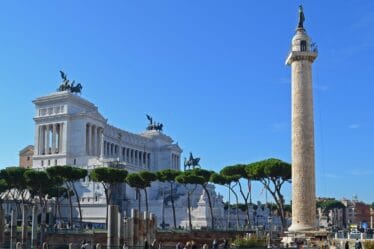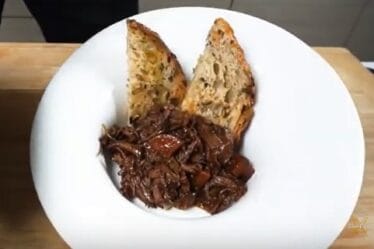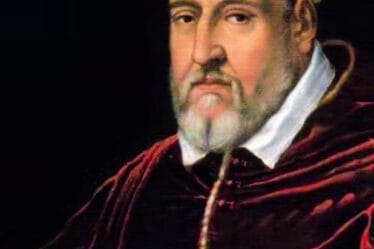
We can be sure of one thing: at Vasari, Andrea del Castagno was not nice, just at all. In his “lives of the most excellent architects, painters and Italian sculptors”, in the chapter dedicated to Andrea del Castagno, Vasari indulges himself: he speaks of the bad character of the painter, calling him “… Allegro when he wanted, in the face; of the spent and proud language, but also above all grudging, jealous and vindictive “. He says that when he was young, he would not have tolerated criticism, and when someone criticized his works, he took revenge “with beatings and other insults”; Once a certain fame was reached as an artist, his character worsened, making a great envy explode in Andrea for a colleague, Domenico Veneziano who, although “foreigner”, was welcome by the Florentines. This is the preamble to one of the most exciting stories that we can read in lives. Giorgio Vasari tells us that Andrea Del Castagno, born in Castagno, spends his childhood here, in the Tuscan countryside.
He remains an orphan of both parents and is adopted by an uncle, who for a long time kept him watching animals. Andrea immediately shows his great inclination for drawing; Vasari writes that in a rainy day the young Andrea finds himself going in front of a tabernacle to which he was working a countryside painter, not particularly gifted; Andrea remains struck, finds a piece of coal and, as caught by a rapt-us, begins to draw by covering the walls of the small village of figures and animals; The gesture does not go unnoticed by the inhabitants of the area, who realizing the young man’s abilities, begin to talk about it; The thing comes to the ears of Bernardetto de ’Medici, who had properties in the area and who wanted to meet Andrea; Speaking with the boy, he asked him if he wanted to become a painter and, to the young man’s affirmative answer, brought him with him to Florence, sending him to Bottega by one of the masters deemed better, to learn the trade. In Florence, Andrea becomes a rather appreciated artist over time. Vasari, despite not the savings stored, calling him more than once a beast, recognizes him an exceptional ability in the design and perspective glimpses while, always in Giorgio’s judgment – and not only – he is not very skilled in coloring his works, Always a little coarse.
During one of his works, Andrea knows Domenico Veneziano, who is called to Florence for “the new way he had to color oil”. Andrea, according to Vasari, nourishes great envy against Domenico Veneziano, precisely because he excelled in that art that defects to him and moreover, “he had nevertheless for evil that, being a foreigner, he was doing from the caress and retained citizens”. Andrea was a very skilled simulator and fought friend of Domenico Veneziano who, he accepted with pleasure this friendship, considering Andrea a man of ingenuity and also very funny. Every night they found themselves going out together to have fun and to make serenades in love, but in Andrea he mounted anger, jealousy and envy towards that stranger so well-liked by everyone every day.
One evening Andrea did not accept the invitation to exit received from Domenico, saying he had to work on drawings of some importance; Domenico came out alone. Andrea came out too, going to wait Domenico behind a song and when he passed from there to return to the house, Andrea “breakdled him with certain leads his lute and the stomach in the same time; But not seeming him to have anchor him in his own way, with the same I beat him up his head badly, then left him on the ground he went back to Santa Maria Nuova to his room and, he had been a door, he stayed to draw in That way that Domenico had been left. Meanwhile, having been heard the noise, the service were ran, understood the thing, to call and give the new bad to the same deadly Andrea and traitor himself; The course, where the other were not consoled around Domenico, nor remained to say: “Oimè my brother, oimè my brother”. Domenico pushed him in his arms and nobody ever knew who had been to kill him, except that Andrea, on the point of death, confessed it.
What can I say, a thriller worthy of the best yellowists … The fact, however, is that all this story is only the result of Vasari’s vivid fantasy and the poor and insulting Andrea del Castagno was not a murderer. Vasari probably confused a fact of news that really happened, right between two painters, named Andrea and Domenico, who were not our two, but two minor painters; The fact had taken place several years before that described by Giorgio Vasari. Not being a contemporary of the painter, Vasari certainly misrepresented the facts and names, the poor Andrea del Castagno as a murderer. In the reality of things, Andrea del Castagno is totally exonerated by the accusation revolt, as Domenico Veneziano died in 1461, four years after the poor Andrea, who died of plague in 1457. Now, admitting that Andrea’s character was actually anger and vindictive, what could have happened between the two when they meet in the next life?
If you want know some of this story about Florence and the citizen, come with us to discover this marvelous city full of secrets. We are running a free walking tour from Santa Maria Novella square.



